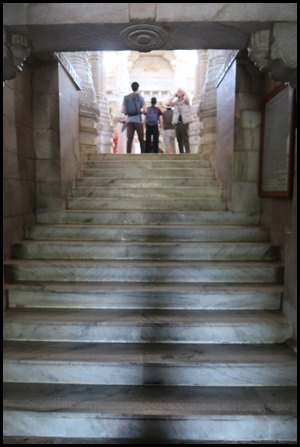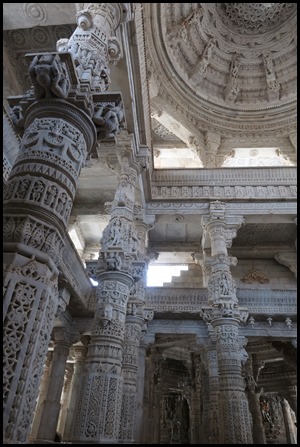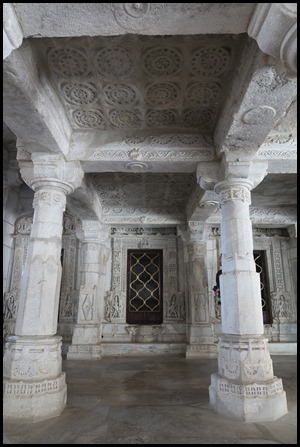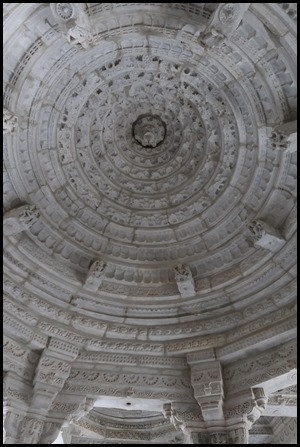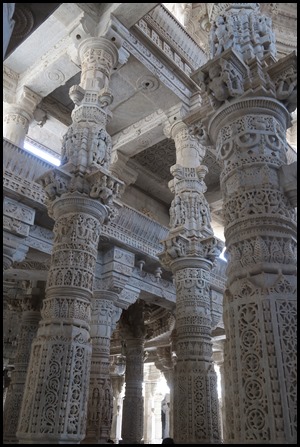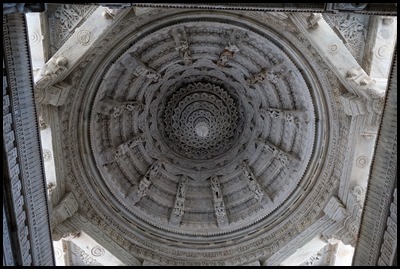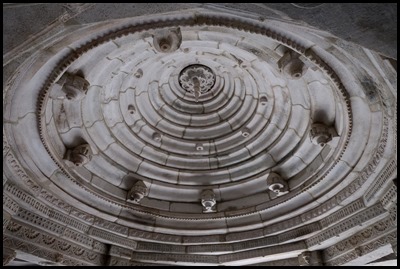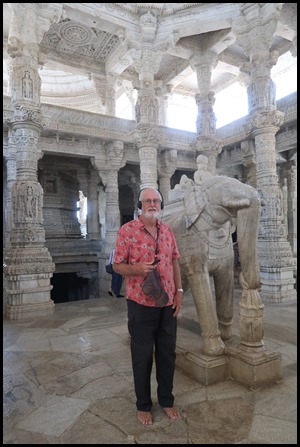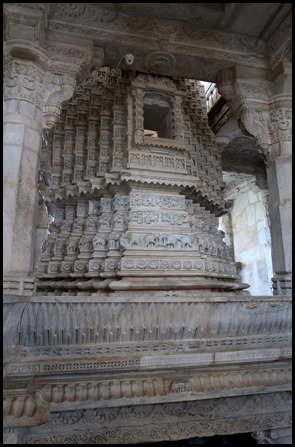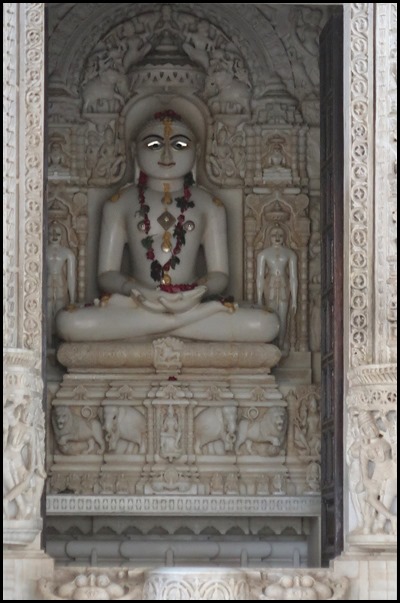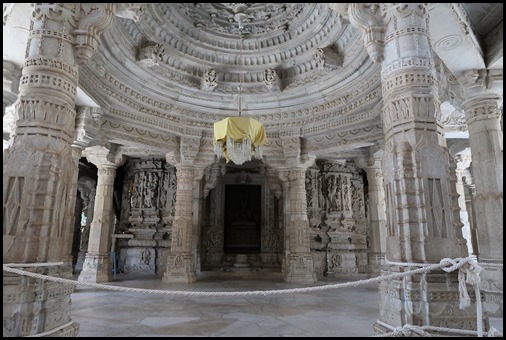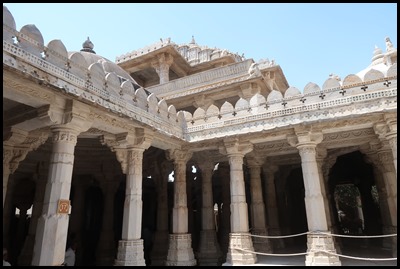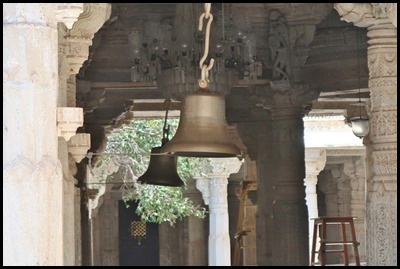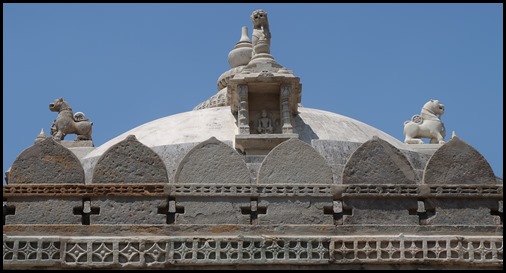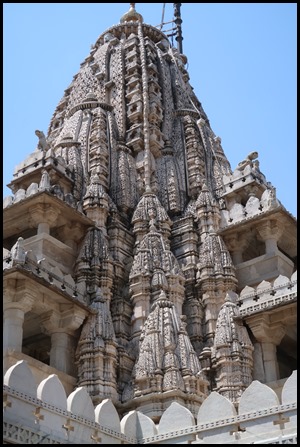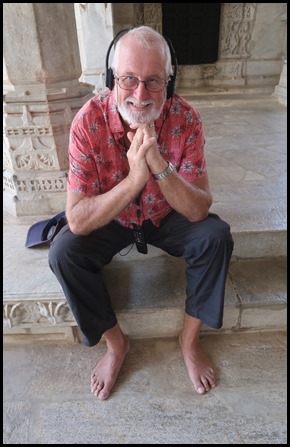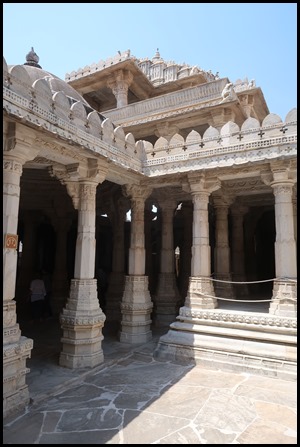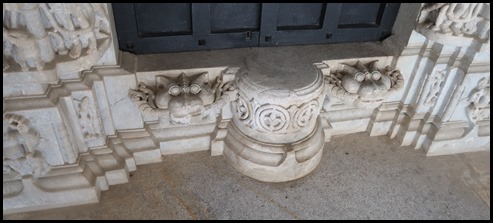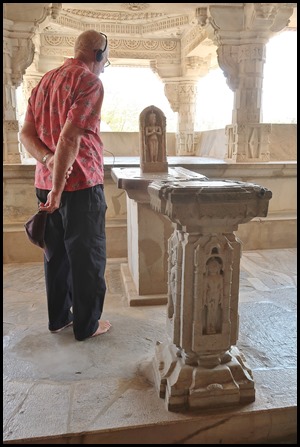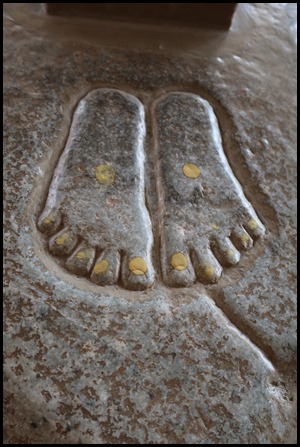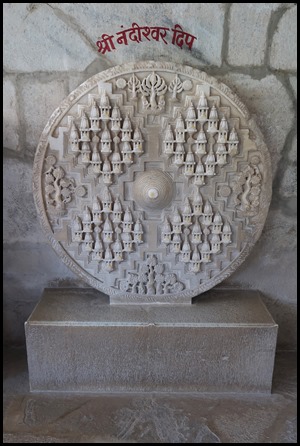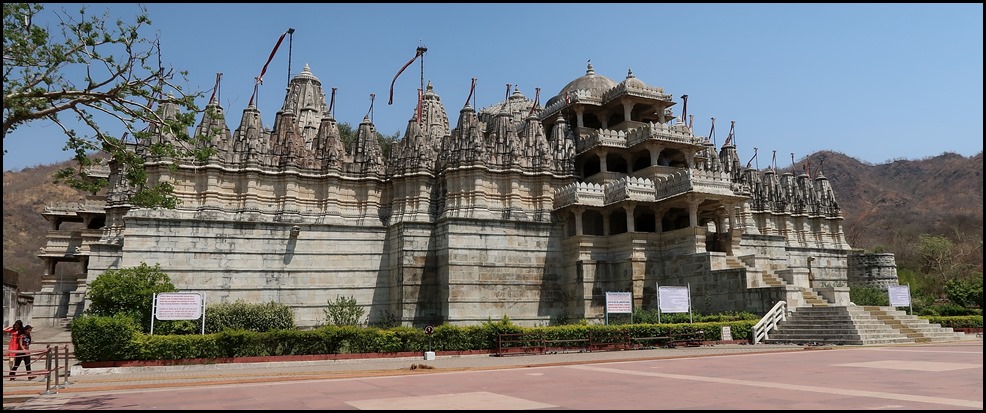Ranakpur Jain Temple

|
Ranakpur Jain
Temple
 Ranakpur
Temple was built by Seth Dharna Sah (a Jain
businessman who foresaw it in a dream) with the aid of Rana Kumbha, who ruled
Mewar in the 15th century The temple complex is positioned in an isolated valley
on the western side of the Aravalli Range (we took a bumpy short cut from the
spectacular Kumbhalgarh
fort).
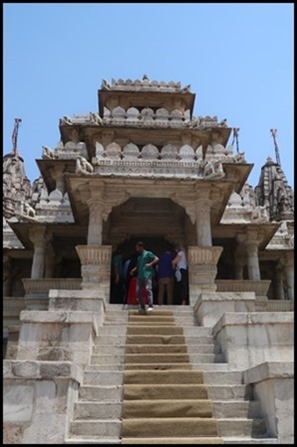 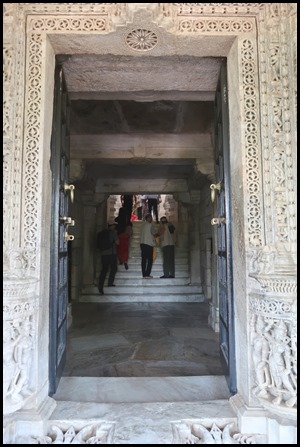 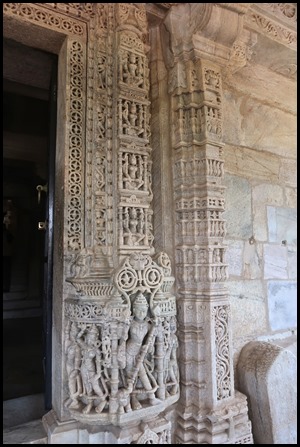
We collected our audio equipment, left our shoes on a stand, went up the steps to the main entrance where bags were searched and an airport-type wand was waggled over us, through the doorway with very intricate carvings each side, ready to be amazed.
We went up the steps The temple is wholly constructed in light coloured marble and stands on a plinth that covers an area an area of 48,000 square feet. There are 1444 exquisitely carved pillars that support the temple. It took 2,500 artisans fifty years to complete and no two pillars are the same, probably built from 1446 to 1496. I had the immediate thought that less would be more and sat to listen to several of the chapters on the audio guide.
On we went, more carvings.
Three of the domes, each different. Besides, seventy six smaller domed shrines, four Rangamandapas (assembly halls), four Mahadhar Prasads (Principal Shrines) situated in the four directions, a number of big and small Devakuikas (subsidiary Shrines) - in all 84 stand embellishing the temple, soliciting and inspiring man to strive for emancipation from cycles of 84 lakhs of birth and death and attain eternal salvation. The four ornate Meghanada-mandapas are unique in their sculptural beauty. Mmmm.
We liked the elephants. Part of the main shrine and a closer look at a pillar.
Trusty side-kick shows just one panel, times this by 1444 plus the rest of the pillar...........
In
the complex, there are several temples including Chaumukha, Parsavanath, Amba
Mata and Surya. Chaumukha Temple is the most important and as the term Chaumukha
suggests, this temple is four-faced and dedicated to Lord
Adinath, who is the first 'Tirthankara' of the Jains. The Temple
structure is highly compound having four different doorways to get into the
chambers. These chambers ultimately take you to the main hall where the image of
Adinath is positioned. (Very dodgy eyes that we thought quite spooky……).
The
four faced image also symbolises the Tirthankara's quest for the four directions
and ultimately the cosmos. The image is surrounded by many small shrines and
domes. One more range of cells with separate roofs encircles these shrines and
domes all over again. The five spires elevate above the walls and around 20
cupolas rise from roof of the pillared hall. Each spire houses a shrine and the
largest shrine is the important one that addresses the central altar. The temple
ceilings are festooned with foliate scrollwork and geometric patterns.
We were not allowed up onto the main altar dais as we are not Jain’s, apparently Gandhi’s mum was. Five
Great Vows (Maha-vratas) of Jainism:-
Non-violence - Ahimsa. Truth - Satya. Non-stealing - Achaurya or Asteya. Celibacy/Chastity - Brahmacharya. (Not sure how the population would grow.......and the temple is known for erotic arts on the wall) Non-attachment / Non-possession - Aparigraha.
The temple is impressive – yes. Are we pleased we visited – definitely. Impressions – I felt it lacked ‘holiness’, that feeling you should get when you walk into a church or cathedral, maybe it was because we came here after the fort or maybe I simply felt it was far too ‘cluttered’.
En route to the car park we stopped to look at the artisans temple complete with busy bees just inside the fence.
ALL IN ALL WAY TOO BUSY WITH SOME NICE BUTS INTRICATE BUT KIND OF WEIRD.......... |
